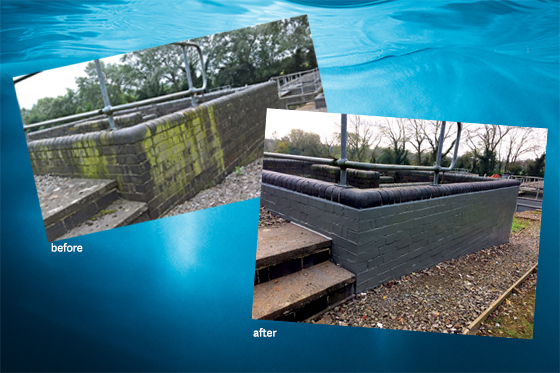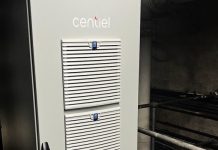Water companies developing their business plans around the key themes for PR19 – Asset Health and Resilience in the Round – will be familiar with the terms Totex and Innovation, both seen as key enablers for OFWAT’s next price review. Tim Farley, Utility Resilience Advisor at Adler & Allan explains.
Whether they are seen at worst as soundbites, or better as signposts for where water companies need to focus their efforts and spending, OFWAT has included these concepts as a way to open up possibilities for increased asset lifespan, serviceability, and direct and indirect cost savings to enable water companies to meet the requirements of a 21st century service.
‘Resilience in the Round,’ can only truly happen when Totex thinking is engaged, with new ways of approaching the cost/benefits of managing assets in new and innovative ways, ensuring assets remain working and online, and reaping the regulatory rewards innovation can deliver over the longer term.
Legacy capex structures and fear of change can often mean that a Totex approach meets some resistance in organisations that have historically replaced assets without considering the long term benefits of refurbishment. With the regulatory push towards long term holistic thinking about asset health, it is critical that water companies adapt their behaviour and investment decisions to ensure they can afford to keep their assets healthy and operational within budget.
All good in principle, but how do you actually deliver on Totex thinking to bring cost savings and continued service and health across your assets?
CEO of Bristol Water, Mel Karam’s thoughts on Totex align strongly with what we at Adler & Allan have been advocating for some time: instead of viewing Totex as merely Capex plus Opex, Mel advocates that Totex should be viewed as problem solving without solution bias. And it’s here where innovation comes in.
By definition, innovation is making changes in something established, especially by introducing new methods, ideas, or products.
For the water industry, innovation’s underlying benefit is cost saving, because doing what has always been done won’t enable water companies to deliver the kinds of service levels demanded now and into the future. Maintaining aging assets in the same way they’ve always been maintained simply won’t work and replacement is financially challenging at a time where everyone is expected to deliver more for less. With a slew of new technologies available to repair and maintain assets far into the next decade, it could even be said that asset replacement borders on the irresponsible.
Take a recent project Adler & Allan completed for Thames Water at Broughton. Two storage tanks – a balancing tank and primary settlement tank – with significant signs of leakage were no longer fit for purpose. The condition of each tank varied, but both required extensive work to repair lateral cracks through which raw sewage was leaking, posing a significant environmental risk to the bordering watercourse.
Rather than implement the traditional approach of reconstruction or extensive civil remediation, Thames were able to make use of a new solution, the application of a resilient external coating that enabled operations on the site to continue while the work was undertaken. Factor in the guaranteed 10 year extension to the asset’s lifespan, as well as the project coming in under the traditional solution budget and you can see how a Totex and innovation approach delivers, and all at a lower cost than the traditional solution. Similar solutions have repaired a leaking Sludge Digester on the Thames Water estate, with work completed while the asset was online, offering direct and indirect cost savings over replacement or traditional civils repairs.
Anglian Water has embraced a similar approach to Innovation and Totex, and Resilience in the Round with a recent program of flood mitigation works. Following the identification of a number of sites at risk of flooding, Adler & Allan was brought in to secure these sites against potential water ingress and environmental contamination to surrounding water courses in the event of a flood. By taking on Adler & Allan’s latest flood mitigation innovations, including the patented JBAR® system, sites were protected more quickly and at a lower cost than traditional methods, securing supply and the surrounding environment, both key considerations for Anglian Water.
PR19 isn’t about innovation for the sake of the new, either in practical solutions or ways of thinking. It’s about water companies employing new approaches, working methods, and the adaption of existing technologies from other sectors to enable better outcomes, in terms of asset longevity, serviceability and a financial upside.
We’re seeing more water companies taking advantage of these opportunities for change and working with us to ensure they can viably meet the requirements of the next AMP cycle. New technologies provide opportunities to keep your assets compliant and working for longer, all at a lower cost than replacement or traditional methods. What it takes is an open mind to look beyond the status quo and see how innovation today can yield Totex benefits tomorrow.
If you’d like to explore how you can maximize the cost benefits of Totex and innovation to improve Asset Health then please get in touch. I’m currently offering a limited number of free asset surveys where we can explore how you can maximise long term asset health and deliver real and measurable Totex savings.
Tim Farley is Utility Resilience Advisor at Adler & Allan, working collaboratively with water companies, contractors and industry forums to promote innovative solutions that deliver AMP6 outcomes. For more information on our comprehensive range of Asset Resilience services and Totex contracting solutions, visit our dedicated website or email Tim –
tim.farley@adlerandallan.co.uk






